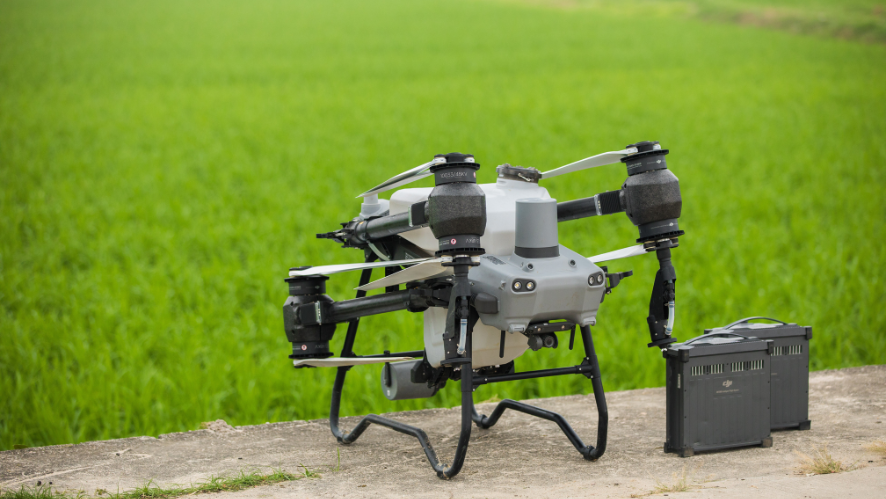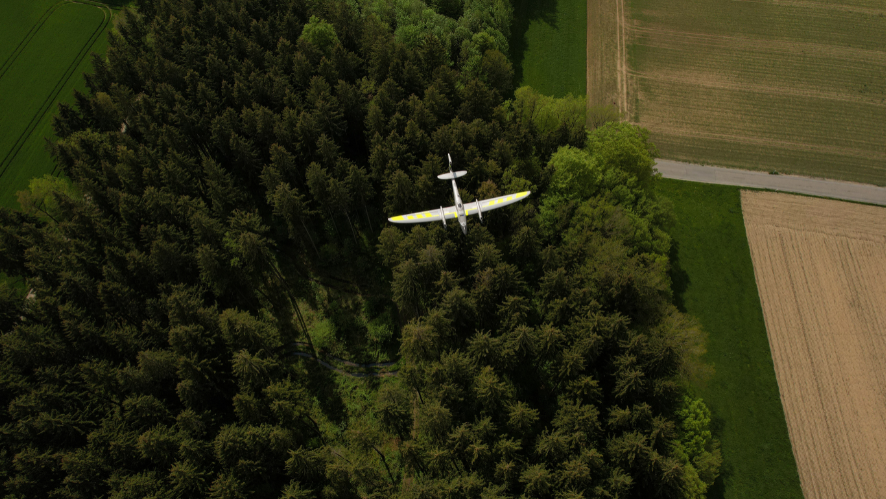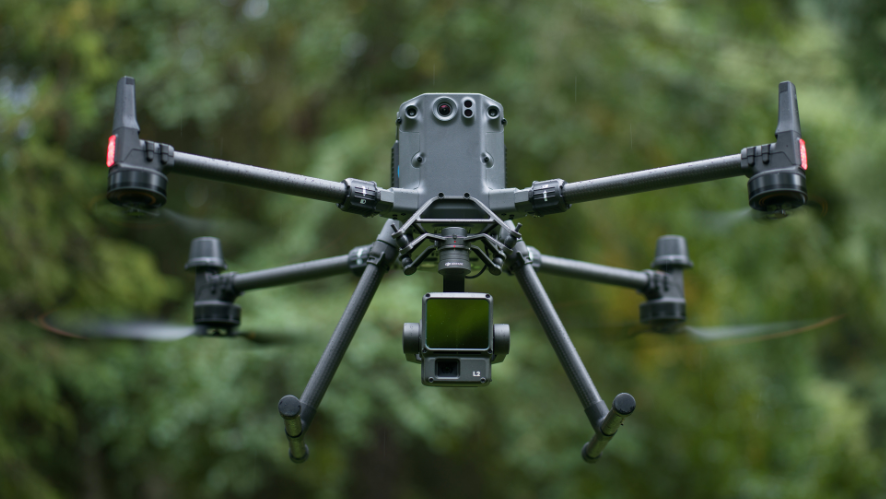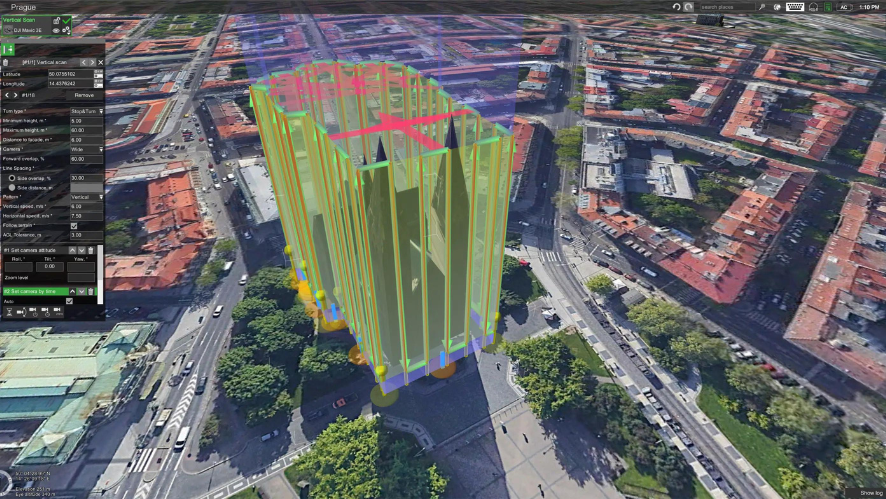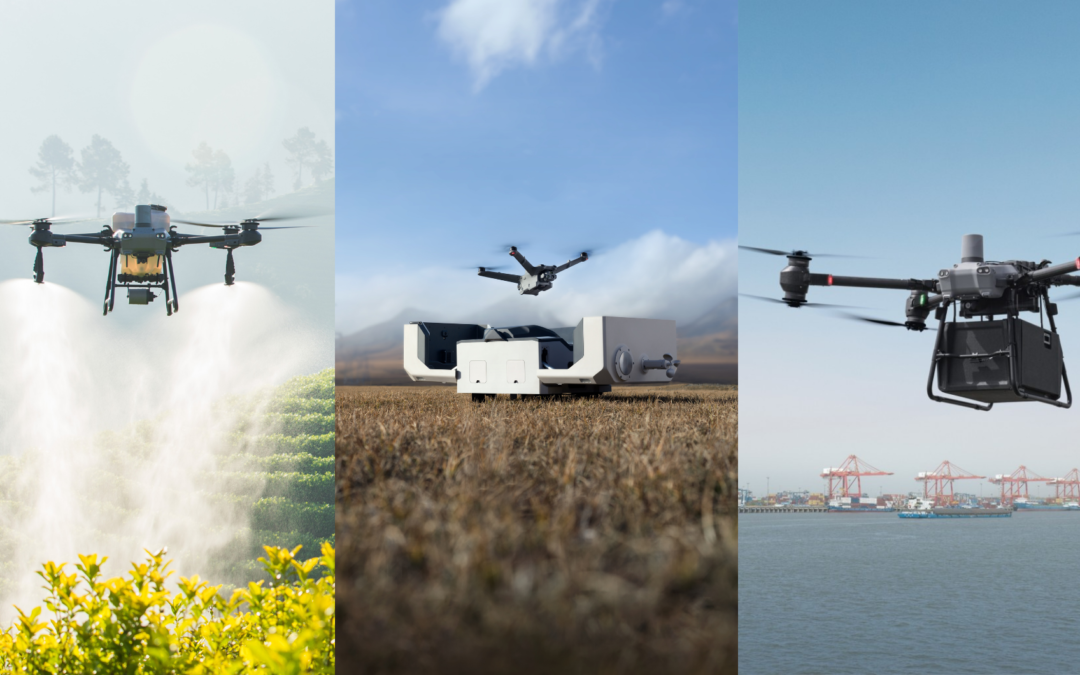DJI has made a name for itself year after year in the most varied fields of activity with its Enterprise, Delivery and Agriculture lines. The drones are equipped with state-of-the-art technology, including advanced stabilization systems, autonomous flight capabilities and integration with various data and sensor platforms. DJI’s market claim is strengthened by its ability to innovate and adapt products that improve the safety and efficiency of operations. In recent months, DJI has launched a number of products in different segments that will undoubtedly revolutionize the market. What are these products? Read on to find out what’s new at DJI.
DJI Dock 2
The DJI Dock 2, a redesigned platform that replaces its first version, arrives smaller, autonomous and with high performance, and is equipped with the Matrice 3D/3TD drone. Not only is it lightweight and easy to deploy, but it also has more powerful operational capabilities and intelligent cloud functions, significantly raising the bar for unattended operations. Compared to the previous DJI Dock, the weight has been significantly reduced, weighing 34 kg, so it can now be easily carried by two people. The Dock 2 is a surveillance solution that goes beyond conventional methods, requiring only an Internet connection and a power supply.
The new Dock also features a unique drone model with two versions: the Matrice 3D and two cameras: Wide-Angle Camera and Tele Camera, capable of meeting the demands of high-precision surveying and mapping operations at 1:500 scale. In addition to the Wide-Angle Camera and Tele Camera, the Matrice 3DT version also features an infrared camera sensor that intuitively provides visible and thermal images, making it ideal for security and inspection operations.
DJI FlyCart 30
A transport drone is DJI’s novelty, as it is the first drone in the DJI Delivery range. The DJI FlyCart 30 is a long distance device with advanced signal and intelligence. The drone has two charging modes, box mode and winch mode. Overcoming traditional logistical constraints, it offers an efficient air transport solution for hard-to-reach locations. Safe, economical and efficient, the FlyCart 30 has an autonomy of up to 18 minutes and a payload capacity of 40 kg, and can be operated with one or two batteries. Equipped with front and rear phased array radars and a dual binocular vision system for intelligent, multi-directional obstacle detection, it can detect obstacles with ease. The Flycart 30 consolidates DJI’s position in the delivery drone sector.
Agras T50
The new Agras model can carry up to 40 kg of spray and 50 kg of spread, increasing its efficiency and coverage capacity in agricultural operations. With the added benefit of an extremely fast charging time of 9 minutes. It has a high flow rate, spraying 24 liters per minute and spreading 108 kg per minute. The Agras T50 can cover 21 hectares in field operations and 4 hectares in orchard operations in 1 hour. What sets the new model apart from its predecessor, the Agras T30, is its atomized spray, i.e. the DJI AGRAS T50’s dual atomization spray system offers a huge flow rate and produces uniform, fine spray droplets that do not drip. Thus, the droplet size can be adjusted between 50 and 500 μm, depending on the chemicals used.
Agras T25
The Agras T25 arrives on the market to set a new benchmark, presenting itself as a light and agile version that can be easily operated by a single person. This model can carry a spraying load of up to 20 kg or a spreading load of up to 25 kg. Like the Agras T50, it is equipped with front and rear radars and phased arrays, a binocular vision system and a high-resolution camera with FPV stabilizer. Perfectly adapted to smaller areas, the T25 can perform a wide range of missions, from aerial survey to spraying and spreading, excelling in various types of terrain. The new spreader and spiral rotating disc of the DJI AGRAS T25 are innovations that significantly increase spreading efficiency and smoothness.
How new drones can transform different industries
The question is how this new equipment will improve your business or professional activity. The answer is here: drones like the DJI FlyCart 30 are revolutionizing logistics operations, providing quick access to hard-to-reach locations, drastically reducing delivery times and cutting operating costs by avoiding congested roads and eliminating the need for ground transportation. And because they run on electricity, they contribute to more sustainable logistics. The FlyCart 30 is versatile, adaptable to various logistical needs and can be used in a variety of sectors, such as healthcare, agriculture and humanitarian aid.
The new DJI Agras, on the other hand, introduces an important innovation by allowing mapping, spraying and spreading with a single drone. With its greater capacity, it can cover many hectares with a 10-minute autonomy. Its atomization spraying system guarantees a more precise, uniform and residue-free application. The more compact model is perfect for smaller areas, now allowing small farmers to benefit from drone technology without the need to invest in large equipment.
The DJI Dock 2, a remote solution, is operational in a very short time and offers live streaming capabilities, allowing, for example, a first responder to assess the situation in real time while traveling to the scene. Dock 2 can perform regular automatic flights ensuring up-to-date data, the drone takes off and performs missions automatically as planned. If it needs to recharge, the drone returns to base and is ready to continue the mission in just a few minutes. It is a versatile solution and can be used in various industries, as the Matrice 3D series is available in two versions.
Therefore, based on what has been described in this article, we are confident that these new releases represent powerful tools and the future of applied technology. Companies that have already adopted these solutions have demonstrated that it is possible not only to reduce working time, but also to significantly increase productivity, efficiency and reduce costs. These advances confirm the positive impact that technological innovation can have on various sectors, transforming processes and improving results.
_________________________________________________________________________________________________________







